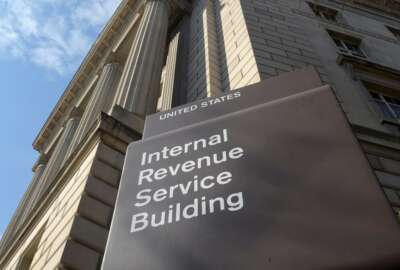

Since Congress approved nearly $3 trillion in pandemic spending the Treasury Department, the bureau and the IRS have come together to get this money out as quic...
The Bureau of the Fiscal Service, two years after putting together a long-term playbook to modernize the federal financial system, has seen some early investments in technology and its workforce pay off during the coronavirus pandemic.
In the weeks after Congress approved nearly $3 trillion in pandemic spending — and with lawmakers set on approving new waves of spending — the Treasury Department, the bureau and the IRS have come together to get this money to agencies, taxpayers and businesses as quickly and efficiently as possible.
Treasury has been in this situation before, sending stimulus checks to households following the 2008 recession, but the scope of its work during the pandemic has well surpassed its workload more than a decade ago.
According to the Government Accountability Office, the IRS issued 116 million stimulus payments worth $94 billion in 2008. However, Treasury has sent more than 140 million pandemic stimulus payments worth $239 billion less than two months after passage of the CARES Act.
Faced with having to disburse as many as 160 million individual payments during the pandemic, Commissioner Tim Gribben said Tuesday that the bureau started planning its execution before Congress passed the CARES Act.
“We did that because we knew that from a check standpoint, we would be facing check paper shortages, we would be facing some staffing and capacity issues. This is a unique environment, as we all know, where you have employees that are operating in a state of, in some cases, fear because they don’t know what’s going to happen. We had to really take care of our employees who had to be onsite to operate the machines generating the checks,” Gribben said in a webinar hosted by the Association of Government Accountants (AGA).
To ramp up production on check printing, Gribben said the bureau instituted mandatory telework for both of its check-printing facilities before applying that policy to the rest of the bureau to reduce the risk of exposure to the employees required to be on-site.
But a financial system generally focused less on paper, and more on electronic payments, as envisioned in the bureau’s 10-year strategy, has helped Treasury disburse this volume of money this quickly.
The bureau, in its current capacity, can generate 5 million to 7 million checks per week, a lower output than what the bureau could produce in 2008. But, to date, the bureau has issued about 78% of pandemic stimulus payments electronically, and can send them to households more quickly and efficiently than paper checks.
Meanwhile, Treasury and the IRS have begun sending out economic impact payments on prepaid debit cards. These cards will go out to nearly 4 million people eligible for payments under the CARES Act, but don’t have bank information on file with the IRS.
The deadline for taxpayers to give the IRS their direct-deposit information passed last week.
After Congress passed the CARES Act, the bureau awarded nearly 200 appropriation warrants to 25 agencies, authorizing them to withdraw additional funds from central accounts run by the Treasury Department.
That workload, Gribben said, comes close to what the bureau typically faces after Congress passes its annual spending bill package for each fiscal year.
But while the bureau usually has about six weeks to direct spending from annual appropriations, Gribben said the bureau only had about a week to direct these funds to agencies after the CARES Act passed.
In standing up the legislation, the bureau also had to stand up 20 new funds that used to take a day-and-a-half to complete manually. But because of its investment in robotic process automation, the bureau was able to set up these accounts in only five hours.
Gribben said the bureau throughout the pandemic has communicated early and often with its workforce, using videoconference platforms, for example, to help onboard new employees during the pandemic and train them on agency equipment.
But beyond the daily operations, Gribben said communication from a distance has helped bureau leadership express their gratitude to staff that have had to work overtime and on weekends to keep up with their workload.
“We made a point of having calls thanking them for what they’re doing, so that they could put in context the importance of what they’re doing, why they’re doing it and how it’s appreciated on up to the secretary,” Gribben said. “The employees, as we all know, are our greatest asset, and where it really comes to light is in a time of a crisis like this.”
Bureau employees, Gribben said, have written to his office and their immediate supervisors thanking them for maintaining clear channels of communication amid the pandemic.
“It all starts from the top, but it doesn’t work unless it filters down, and we make sure that it does by being able to spread the message, by being able to thank people for what they’re doing and trying to take away some of that stress of what’s coming next — by being clear about what our plans are for the next phase,” Gribben said.
Copyright © 2024 Federal News Network. All rights reserved. This website is not intended for users located within the European Economic Area.
Jory Heckman is a reporter at Federal News Network covering U.S. Postal Service, IRS, big data and technology issues.
Follow @jheckmanWFED


